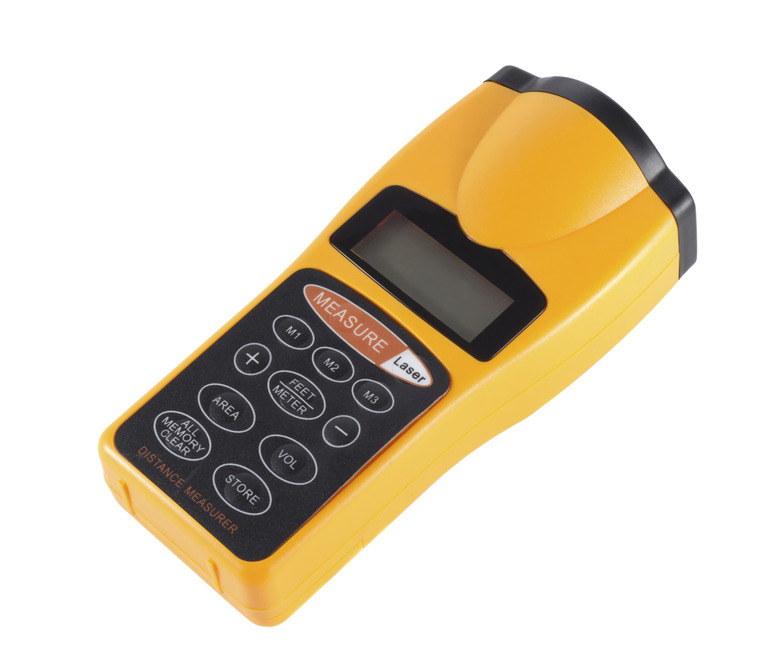List Of Measuring Tools For Length
It isn't just builders who need to measure length, although they have to do so often. Length measurements are important in the laboratory, tailors' shops and even on the high seas. The most common way to measure length is by using the scale on some sort of hand-held tool or implement, but you can also measure length — or distance — with radar, sonar and laser beams. You can even use the GPS function on your phone.
Traditional Measurement Units
Traditional Measurement Units
The most natural way to measure length is to compare it to some part of the body, and for centuries, people did just that. The unit we call a foot has been used since ancient times; it is equal to the length of an average foot — formerly 11 1/42 inches but now 12 inches. For its part, an inch was traditionally the width of an average thumb, but Edward II of England ruled in the 14th century that it should be the length of three grains of barley placed end to end. Two centuries earlier, Henry I defined a yard as the distance from his nose to his thumb when he stretched out his arm.
The Ruler and Tape Measure
The Ruler and Tape Measure
The ruler — a flat length of wood or metal graduated in traditional English units, metric units or both — is the most basic tool for measuring length. Typical rulers are either 1 foot or 1 yard in length. When you replace rigid wood or metal with either thin, flexible metal or fabric, you have a ruler that you can use to measure curved shapes. Make this ruler as long as you like and store it in a container and you have a tape measure, a tool no builder or tailor would be without.
Calipers and Opisometers
Calipers and Opisometers
Technicians working in laboratories need more precision than tradespeople, and they use a vernier caliper to measure lengths as well as the inside and outside diameters of round openings. The caliper has a set of jaws that can fit over objects as well as inside openings, and you read the space between the jaws on an accurately graduated ruler. A micrometer is another type of caliper that relies on screw threads for accuracy. For measuring curved lines, mapmakers use an opisometer, a wheel connected to a calibrated scale. By running the wheel along the line, you can read the distance the wheel travels from the scale. The measuring wheel that landscapers use to measure long distances operates by the same principle.
From Low to High Tech
From Low to High Tech
Land surveyors who need to measure long — sometimes curved — distances used to rely on a surveyor's chain. Also called a Gunter's chain, it consisted of 100 links of equal size and was 66 feet in total length. Today, they use a surveyor's tape — a very long, flexible tape measure — or they use laser technology. A laser measuring device emits timed laser pulses toward a fixed object that reflects it and measures the time it takes for the beam to travel back. GPS measuring devices operate on a similar principle; they measure how long a pulse from one location takes to reflect off a satellite and compare that to the same measurements from a different location.
